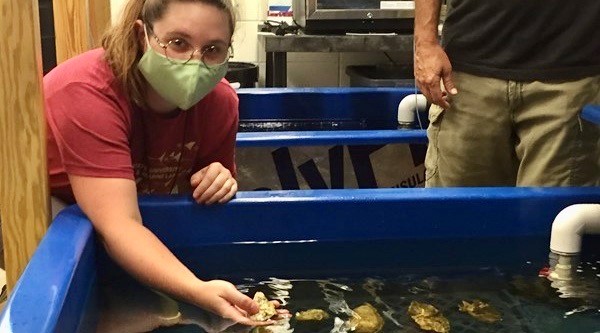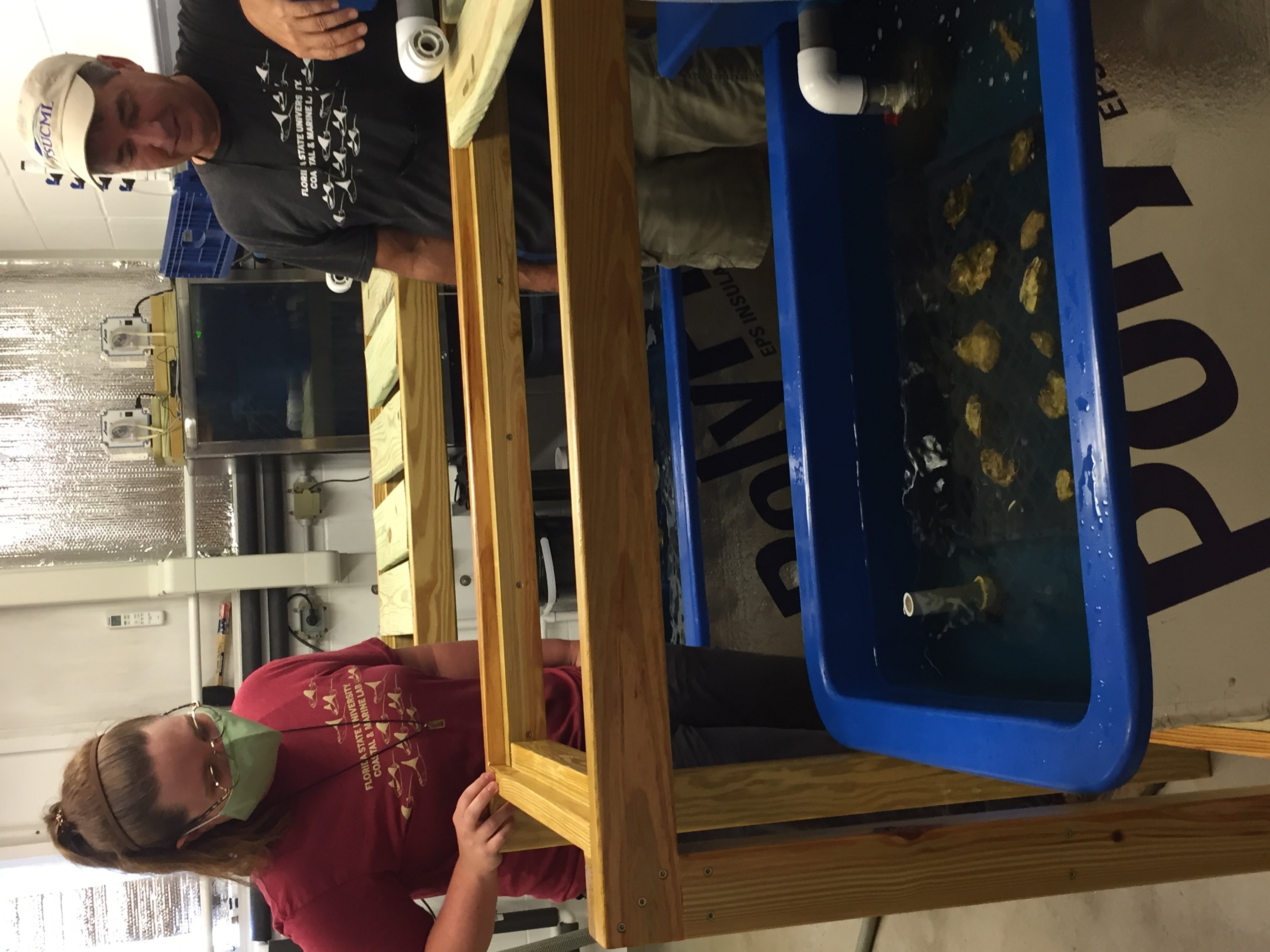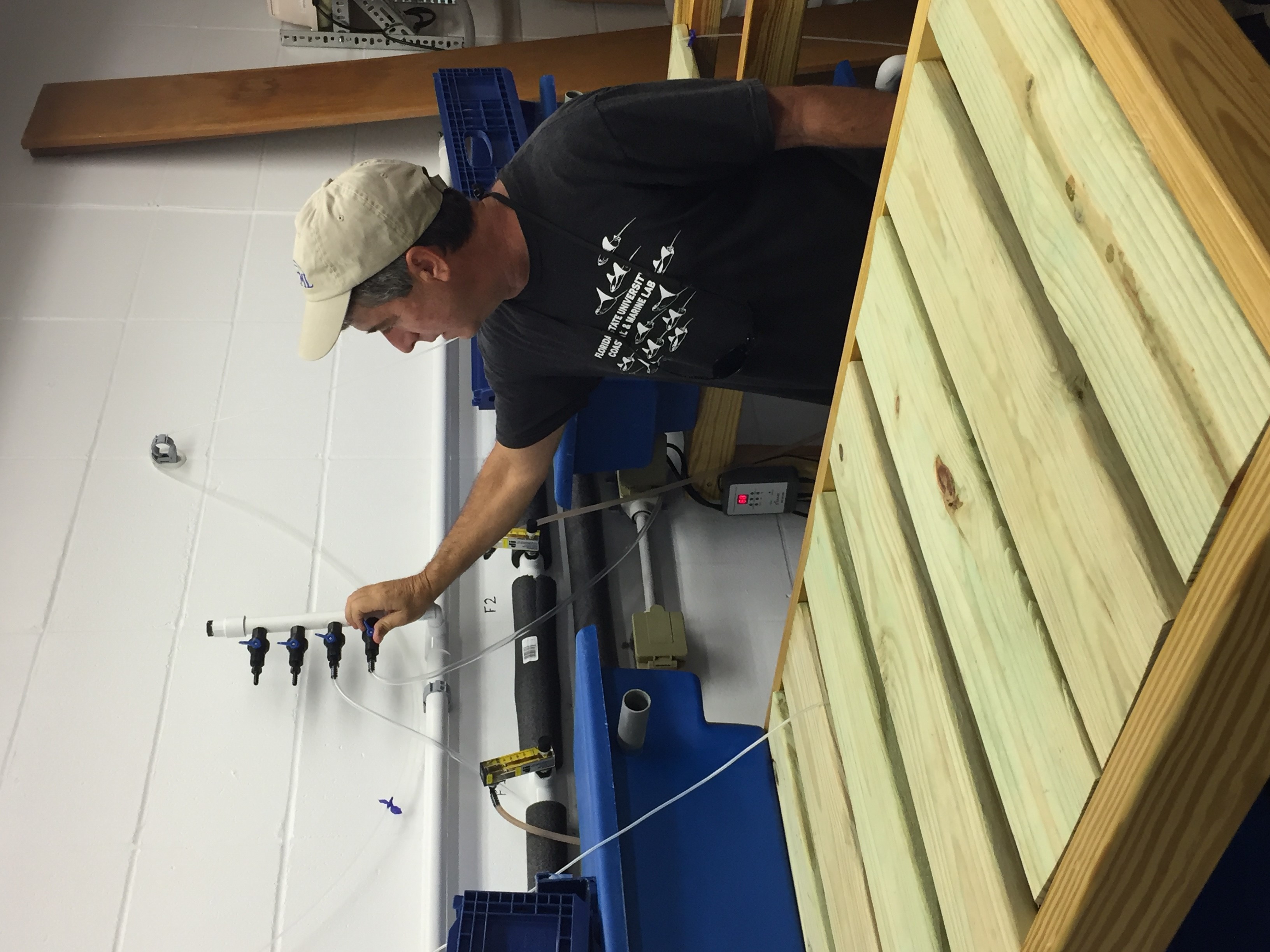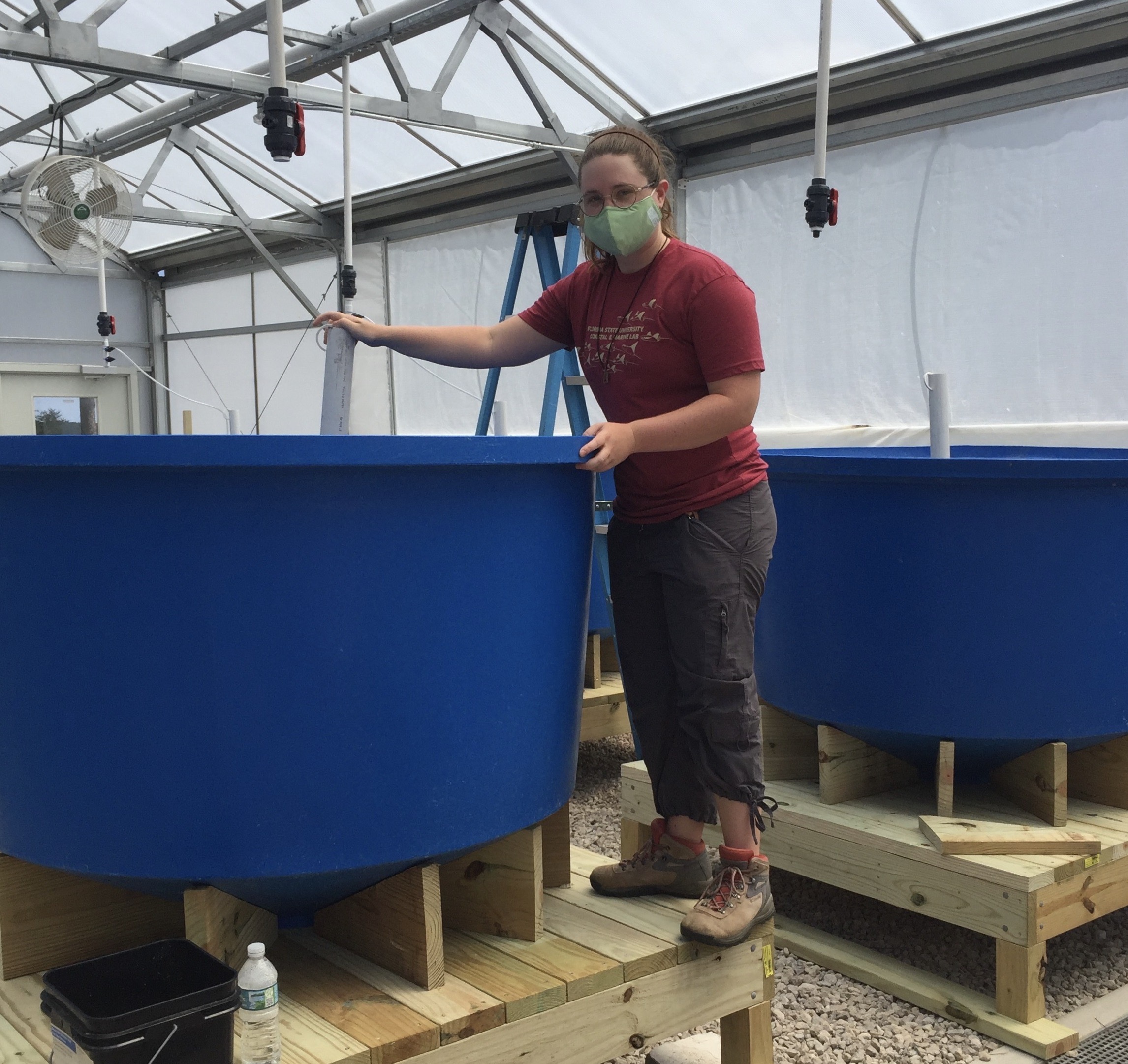
Rearing Oysters for Experiments in the Lab & Field
Gathering oysters in the field from reefs in the Apalachicola Bay System ensures that the offspring reared in the lab for habitat and restoration experiments come from local environments.
Running field and laboratory experiments is central to ABSI's work in determining the best places to restore existing or build new reefs in Apalachicola Bay that will have the highest chance of success in rebuilding local oyster populations. In order to carry out those experiments, we need to produce and rear young oysters that can be set on oyster shell or cultch for transfer to the field. The first step is collecting adult oysters (2-3 years old) from the Apalachicola Bay System to use as broodstock, cleaning them thoroughly, and maintaining them in the laboratory so that they can provide eggs and sperm to produce larval oysters when needed. The people in charge of this entire operation, from adult oyster arrival at the lab through the spawning and setting of spat, include Joe Rocco, ABSI Hatchery Manager, and Benton Jaco, Hatchery Intern.
In the laboratory, Rocco and Jaco hold broodstock in two temperature-controlled tanks with a semi-flow through recirculating seawater system, which allows them to feed the oysters with natural algae while controlling alternative feed inputs. To get the broodstock ready for spawning, oysters are initially held in tanks at relatively cool temperatures (20°C) to prevent spawning while being fed high levels of algae to encourage gonadal and physical growth. To get the broodstock ready to spawn, the temperature is raised gradually while algae rations are reduced so that energy shifts from growth to reproduction.
Once the oysters are ready to spawn, each oyster is placed in an individual container in a multi-tank array and are collectively stimulated to spawn by cycling ambient temperature and warm water (5-10°C higher than ambient) through the entire array to stimulate mass spawning. Release of the reproductive cells (egg or spawn) turns the water quite milky, with eggs appearing like granules in the water.
The reproductive cells and already fertilized eggs are filtered through a mesh screen to remove any waste and allow fertilization to continue before being transferred to large holding tanks for larval rearing in the hatchery. Within days, they become tiny free-swimming oyster larvae with a clear shell and a ciliated appendage that is used for both swimming and feeding. They grow to become pediveligers that can use their foot to crawl along the bottom and "set" on oyster shell where they metamorphose into non-motile juveniles called "spat". After they spend some time feeding, they are ready for use in hatchery-based experiments that will help inform a biophysical model capable of forecasting larval recruitment, or for the field as part of oyster reef restoration experiments.




